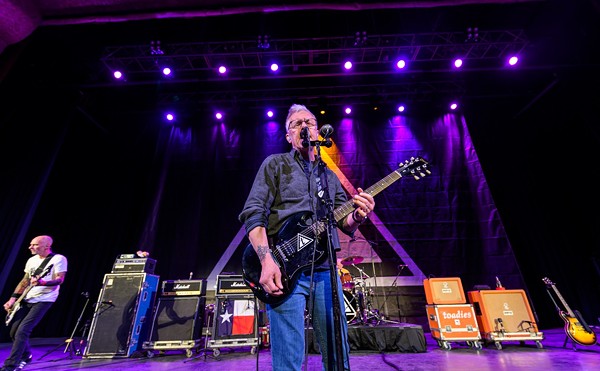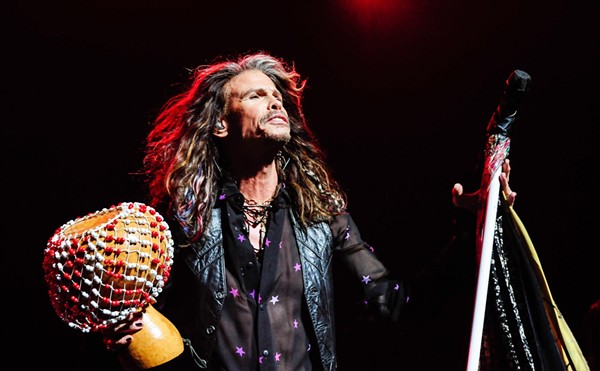“Mercedes was the greatest voice and had the biggest heart for those who suffer. … She sang for her people and her American `continent`, but her universal chant was heard throughout the world. Her voice resonated in the heart like an embrace.”
— Shakira
I don’t recall a second of my life in which Mercedes Sosa was not a superstar.
From an early age, in the late ’60s, I knew that the Argentine with the blackest and straightest of hair and the most enigmatic eyes I had ever seen was some kind of badass singer my parents (and everyone around us) adored. Later on, I became a devotee myself, as soon as I heard her voice for the first time. I don’t remember what song it was; all I remember is that it was a voice that seemed to be simultaneously coming straight from the center of the earth and from beyond the earth. It was an entirely spiritual affair.
And finally, as I’m writing this, it hit me: “La Negra” is gone.
Mercedes Sosa, 74, inarguably the greatest living singer in Latin America, and arguably the greatest ever, died on October 4 in Buenos Aires from complications from kidney disease. She spent most of her last 13 days in a pharmacological coma, until her body gave in. The Argentine government declared three days of mourning, and her body was displayed in the National Congress, where thousands of fans showed up to say goodbye. Her body was cremated on October 5.
Even though Sosa’s fame spread well beyond the confines of the Río de la Plata (her recording career spanned 50 years and dozens of styles, and she could sell out both Carnegie Hall and the Roman Coliseum, as she did in 2002), to everyone she was Mercedes Sosa. For Argentines and Uruguayans, however, she was La Negra, a vocal powerhouse who sang to each one of us and who single-handedly destroyed stylistic differences just by opening her mouth. She wasn’t the first artist to delve into folk and rock (to name two of the many styles she recorded), but none had the reputation and respectability to tell the folkies that rock ’n’ roll was cool, or to tell the rockers that you cannot be a true rockero unless you appreciate the best native folk has to offer. Her first big statements on this were her monumental live recordings at the Buenos Aires Opera in 1982, when she returned from forced exile and called on rockeros and folkloristas to sing with her. Later on, she solidified that dialogue with Alta fidelidad (1997), a classic album written and produced by Charly García, Argentina’s number-one rocker.
As noted in Sosa’s New York Times obituary, Joan Baez (who illustrated the cover of Sosa’s 2005 Latin Grammy-winning Corazón libre) once said that Sosa was “monumental in stature, a brilliant singer with tremendous charisma who is both a voice and a persona. ... I have never seen anything like her. ... As far as performers go, she is simply the best.”
In total, Sosa won three Latin Grammy awards and will probably win at least one of her two new nominations for Cantora, her latest double CD of collaborations (winners will be announced in November). But I’ll always remember her for her incredible voice and for my two encounters with her.
The first took place in LA in the mid-’90s. AIDS-stricken Juan Carlos Nagel, a writer for La Opinión and a friend of Sosa, had helped organize a show for her at UCLA’s Wadsworth Theater. Months before his death, Nagel attended in a wheelchair, and at the end of the show Sosa dedicated the performance to him. As we were leaving the theater, a visibly moved Nagel asked me, “Did she really say that? Did Mercedes Sosa dedicate her show to me? I can die now. … I can die now.” Such was Sosa’s stature, even among friends.
The last time I saw her was in LA in 2000, right after she won her first Latin Grammy for Misa Criolla. Even though I had written the official program book for the event (as I would do with the next two editions), I had mixed feelings about the whole voting process: Many major artists with superb albums were ignored, but some major artists, like Mercedes Sosa, earned deserved recognition. It was the first Latin Grammys, and her classy acceptance speech (and her mere presence) was a much-needed endorsement for an event that began on shaky ground. On a personal level, seeing her with the gramophone in hand made me a believer — yes, perhaps it is possible for the music industry to do both business and art.
As she was walking out, followed by her staff, press, friends, and a handful of fans backstage, I mentioned this to her, and asked her if this honor helped to somehow soothe the pain and persecution she had to endure for some time due to her social conscience and commitment to human-rights movements. She smiled, looked at the gramophone, and replied, “Y tú qué crees?” (“What do you think?”)
“Gracias a la vida, que me ha dado tanto” (Thanks to life, that has given me so much) she sang in the ultimate version of Violeta Parra’s “Gracias a la vida,” her greatest hit. Today, the outpouring of affection and recognition for her remarkable career is nothing but life giving thanks to her. •
















